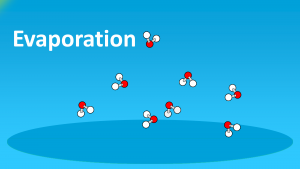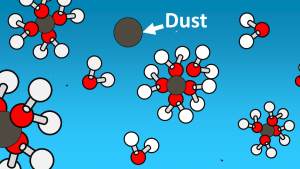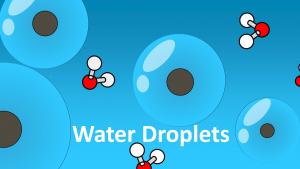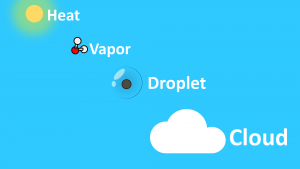Clouds: formation
How Clouds are Formed
Learning Objectives
This is The Cloud. You know, those white things that float in the sky? Yes, it’s very cute, very cute, yes, it is.
But do not be fooled. Despite their fluffy looks, clouds are very wet, very heavy, and very dirty.
Allow me to explain.
You see, clouds form when water on the earth’s surface is heated enough to become water vapor. If you remember from earlier, this is called evaporation: a liquid entering gas form (Figure1).

This vapor rises into the atmosphere.

And as these tiny water molecules ascend, they begin to cool and condense; sticking to tiny particles of dust in the air (Figure 2) to form water droplets (Figure3): and if it’s cold enough, ice crystals. Hence, the snowflake.

And when these droplets come together? Cloud.
These are what clouds it makes of. Those white sky pillows. Dust water (Figure4).

So, let’s go over this again.
- Water on earth’s surface is heated into water vapor: water molecules in gas form.
- Water molecules ascend.
- Water molecules stick to dust and condense.
- Droplet.
- Droplets associate to form clouds.
- Heat, vapor, droplet, cloud (Figure5).

And That is how clouds are formed.

